 This week we are starting into the last stretch of the term. Students are well into their final sections of work. Our youngest students are thinking about how we care for places, slightly older students are displaying their posters and older students are giving their presentations.
This week we are starting into the last stretch of the term. Students are well into their final sections of work. Our youngest students are thinking about how we care for places, slightly older students are displaying their posters and older students are giving their presentations.
Foundation/Prep/Kindy to Year 3
Our youngest students doing the stand-alone Foundation/Prep/Kindy unit (F.2) are thinking about how we look after different places this week. Students in integrated Foundation/Prep/Kindy and Year 1 classes, doing Unit F.6, are displaying their posters on an issue in their local environment. These posters were prepared in proceeding weeks and can now be displayed either at school or in a local library or hall. The teacher may choose to invite parents to view the posters as well. Students in Years 1 (Unit 1.2), 2 (Unit 2.2) and 3 (Unit 3.2) also have posters to display on a range of issues, either at the school, in a local place, such as a park, or even a local heritage place. Discussions around points of view and the intended audience of the posters can help students to gain a more in-depth understanding and critique their own work.
Years 3 to 6
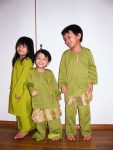 Students in Years 3 (Unit 3.6), 4 (Unit 4.2), 5 (Unit 5.2) and 6 (Unit 6.2) are in the second of 3 weeks set aside for their presentations. The presentations cover a significant body of work and thus a 3 weeks of lessons are set aside for the presentations, as well as for finishing any other sections of work not yet completed. Year 3 students are considering extreme climate areas of Australia and other parts of the world, such as the Sahara Desert, Arctic and Antarctica and Mount Everest, by studying explorers such as Edmund Hillary and Tenzing Norgay, Robert Scott and Pawel Strzelecki. Year 4 students are studying explorers and the environments and animals of Africa and South America, such as Francisco Pizarro, the Giant Vampire Bat, Vasco Da Gama and the Cape Lion. Year 5 students are studying explorers, environments and animals of North America, such as Henry Hudson, Hernando de Soto and the Great Auk. Year 6 students are studying explorers, environments and indigenous peoples of Asia, such as Vitus Bering, Zheng He, Marco Polo, the Mongols and the Rus.
Students in Years 3 (Unit 3.6), 4 (Unit 4.2), 5 (Unit 5.2) and 6 (Unit 6.2) are in the second of 3 weeks set aside for their presentations. The presentations cover a significant body of work and thus a 3 weeks of lessons are set aside for the presentations, as well as for finishing any other sections of work not yet completed. Year 3 students are considering extreme climate areas of Australia and other parts of the world, such as the Sahara Desert, Arctic and Antarctica and Mount Everest, by studying explorers such as Edmund Hillary and Tenzing Norgay, Robert Scott and Pawel Strzelecki. Year 4 students are studying explorers and the environments and animals of Africa and South America, such as Francisco Pizarro, the Giant Vampire Bat, Vasco Da Gama and the Cape Lion. Year 5 students are studying explorers, environments and animals of North America, such as Henry Hudson, Hernando de Soto and the Great Auk. Year 6 students are studying explorers, environments and indigenous peoples of Asia, such as Vitus Bering, Zheng He, Marco Polo, the Mongols and the Rus.

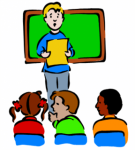 This week students are starting to round off their main body of assessable work for the term. Older students are completing and starting to present their presentations, while younger students have posters and models to finish off.
This week students are starting to round off their main body of assessable work for the term. Older students are completing and starting to present their presentations, while younger students have posters and models to finish off.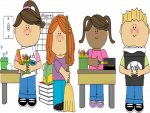 Students in integrated Foundation/Prep/Kindy and Year 1 classes (
Students in integrated Foundation/Prep/Kindy and Year 1 classes (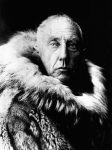 Students in Year 3 (
Students in Year 3 (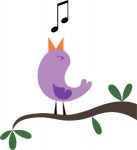 NAPLAN’s over and it’s time to sink our teeth into the main body of curriculum work before mid-year reporting rolls around. Our younger students are using all their senses to study the environment and local area around them, whilst our older students are hard at work on their Explorer projects.
NAPLAN’s over and it’s time to sink our teeth into the main body of curriculum work before mid-year reporting rolls around. Our younger students are using all their senses to study the environment and local area around them, whilst our older students are hard at work on their Explorer projects. Students in Years 3 (
Students in Years 3 ( It’s NAPLAN week and that means time is short! Fortunately, the Understanding Our World™ program is based on 9 week units, which means that if you run out of time in any particular week, it’s not a disaster. Furthermore, we have made sure that there is plenty of catch-up time within the lessons, so that there is no need to feel rushed. This week students are getting into the nitty gritty of their term projects. Our youngest students are studying their surroundings at school and in the local area. Older students are getting to the core of their research projects.
It’s NAPLAN week and that means time is short! Fortunately, the Understanding Our World™ program is based on 9 week units, which means that if you run out of time in any particular week, it’s not a disaster. Furthermore, we have made sure that there is plenty of catch-up time within the lessons, so that there is no need to feel rushed. This week students are getting into the nitty gritty of their term projects. Our youngest students are studying their surroundings at school and in the local area. Older students are getting to the core of their research projects. Students in our standalone Foundation/Kindy/Prep class (
Students in our standalone Foundation/Kindy/Prep class ( Students in Year 3 (
Students in Year 3 (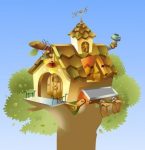 Foundation to Year 3
Foundation to Year 3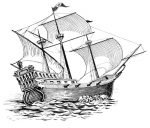 Students in Years 3 to 6 (Units
Students in Years 3 to 6 (Units 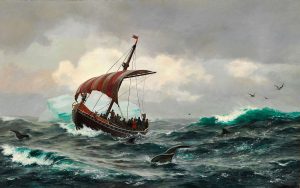

My 9 year old son fell in love with all the aspects of this program - the simple but still…
Cara, Parent